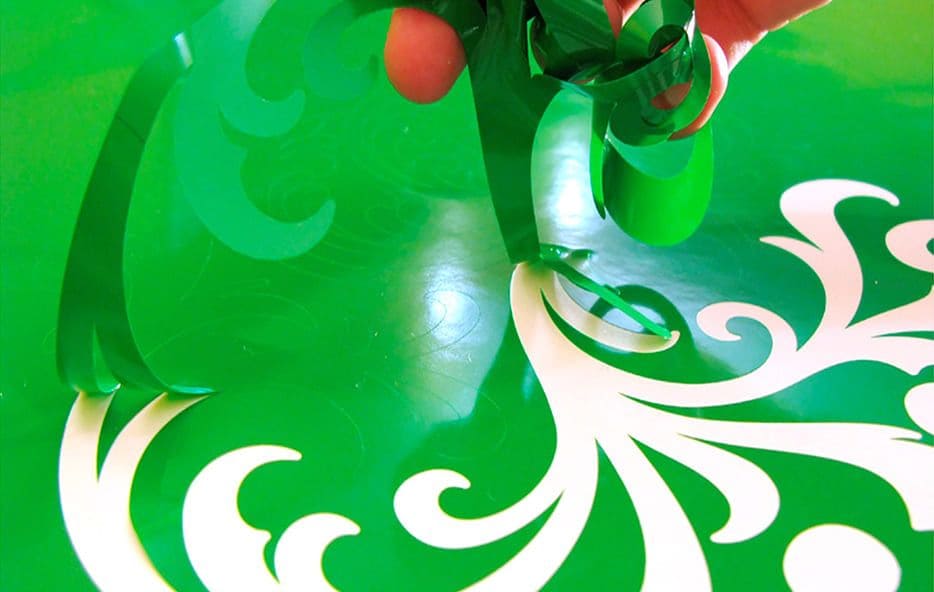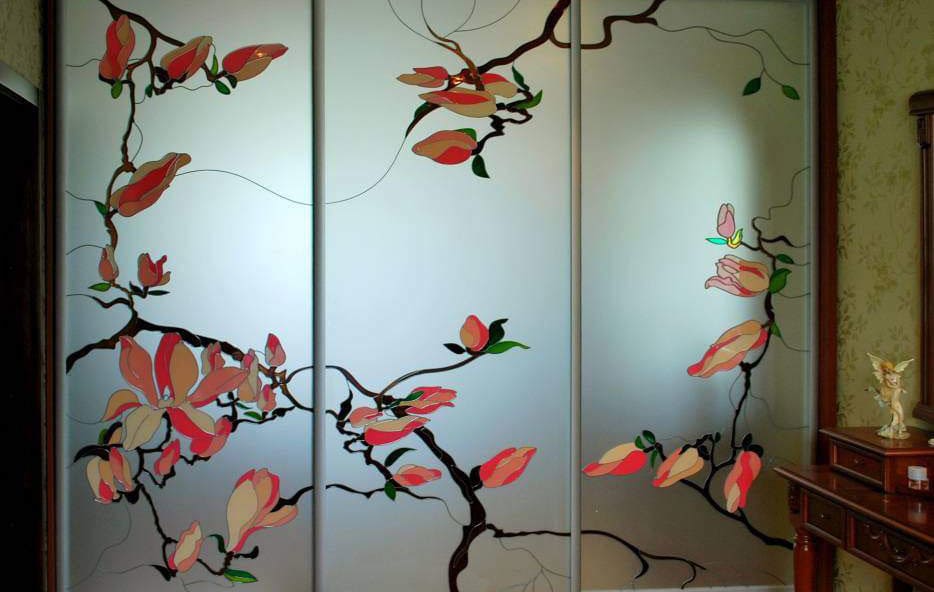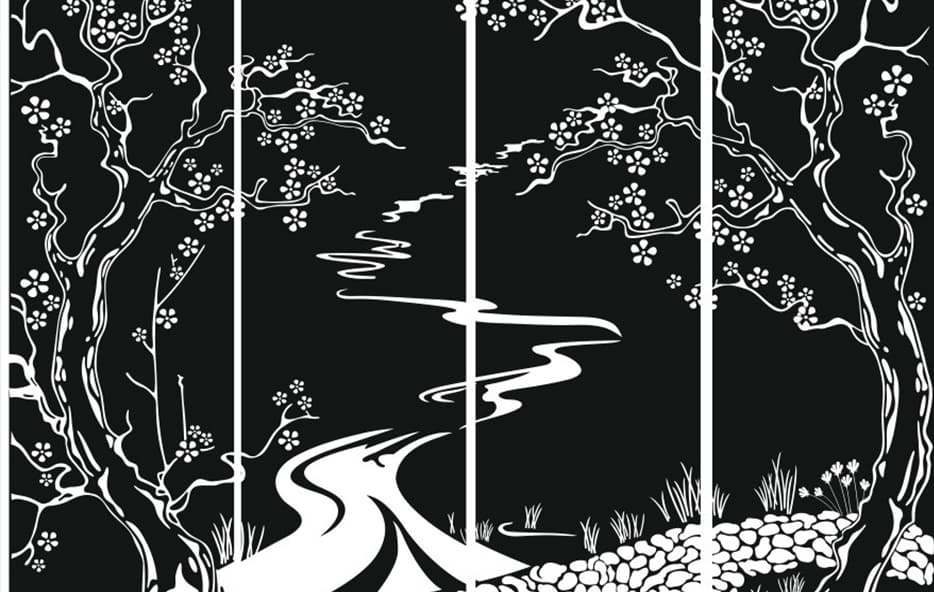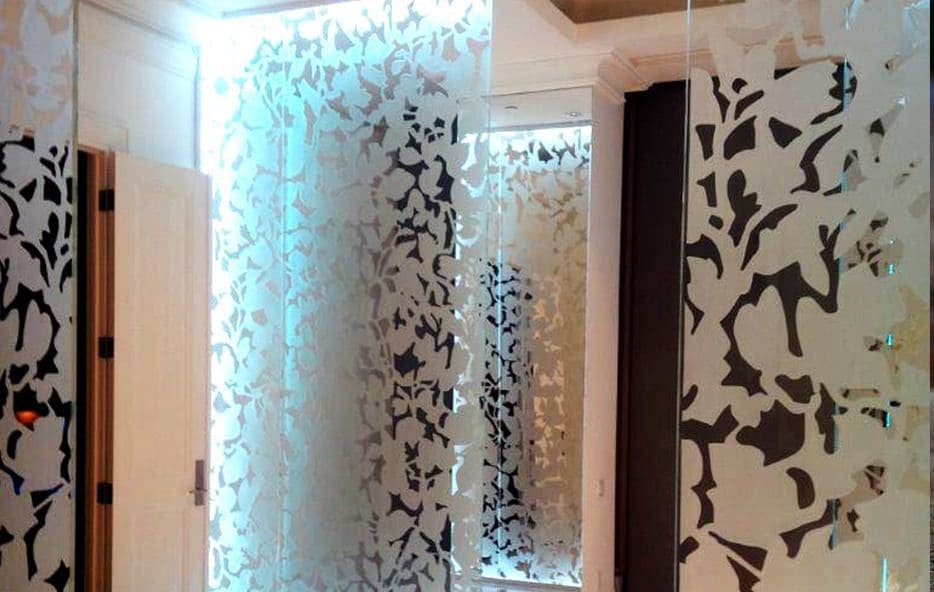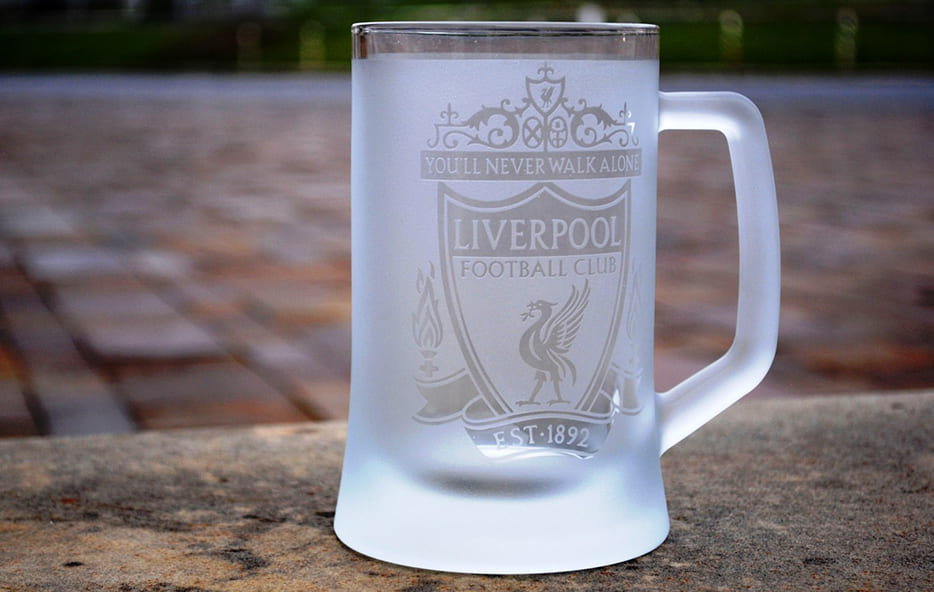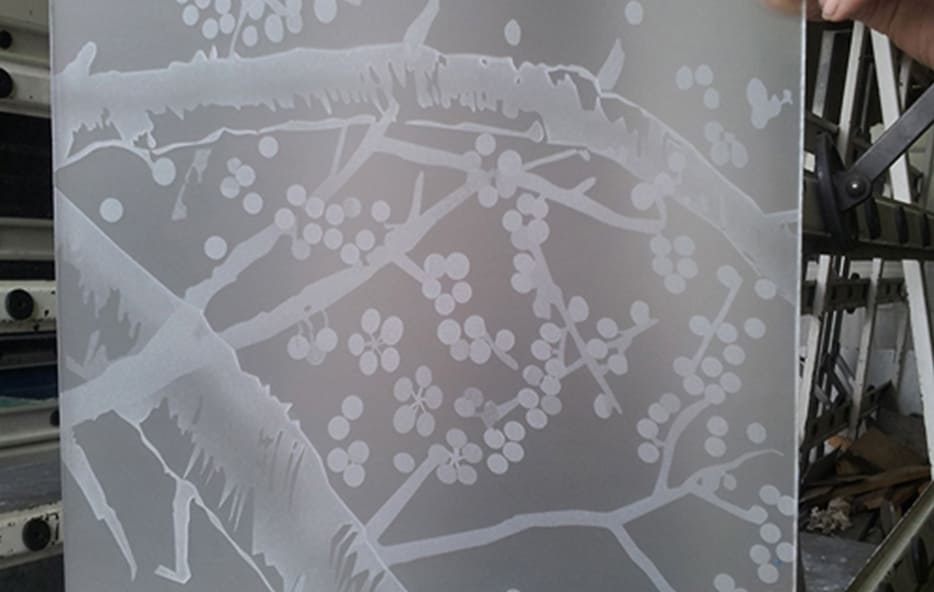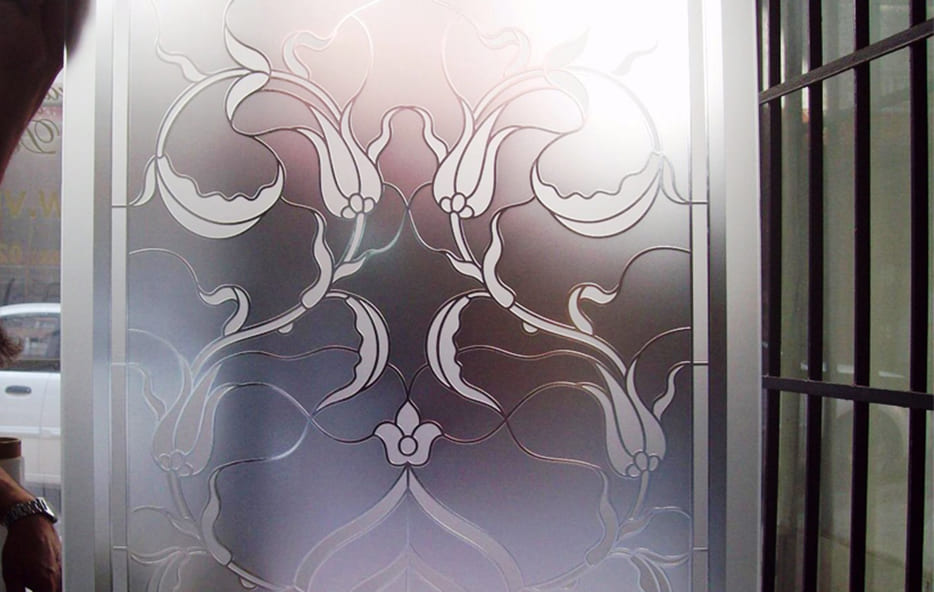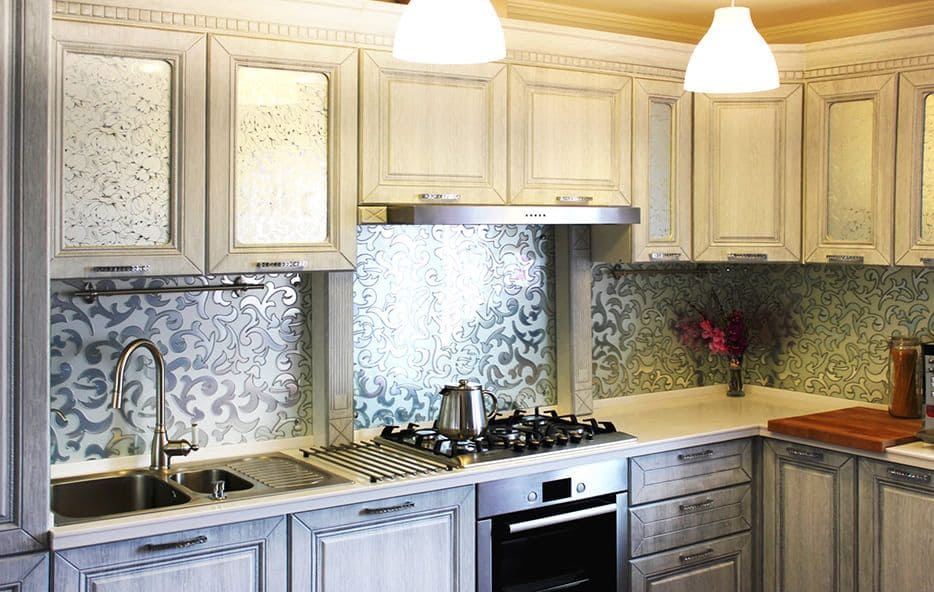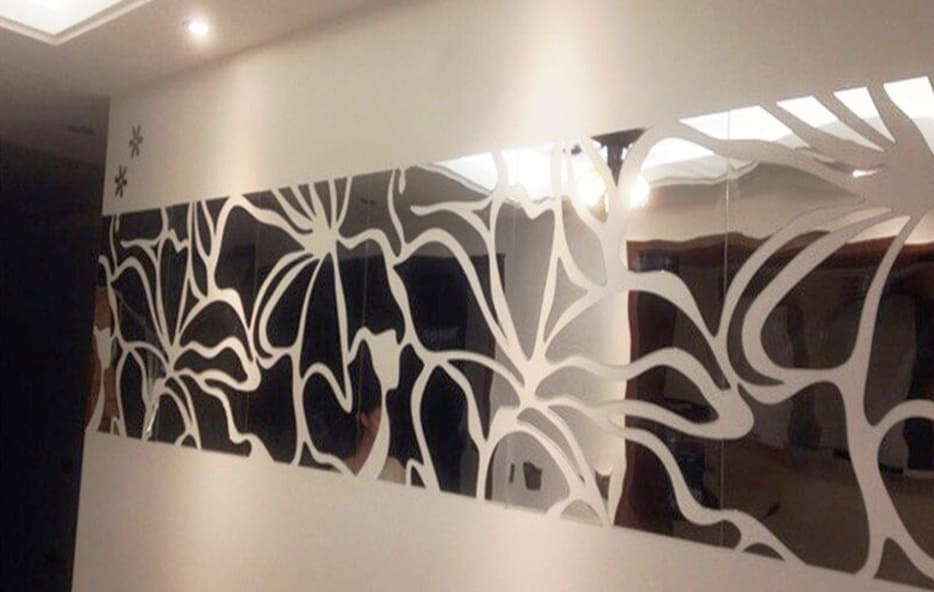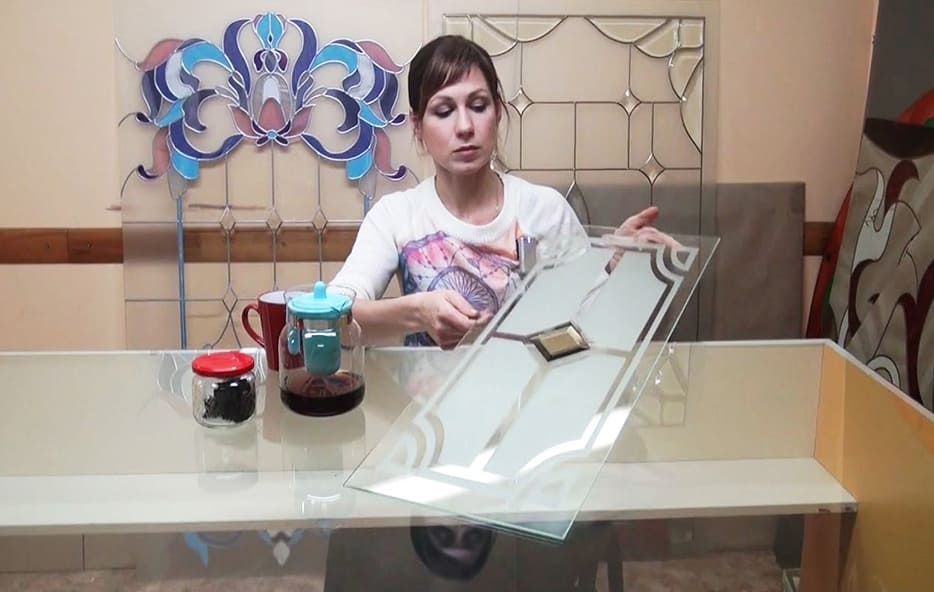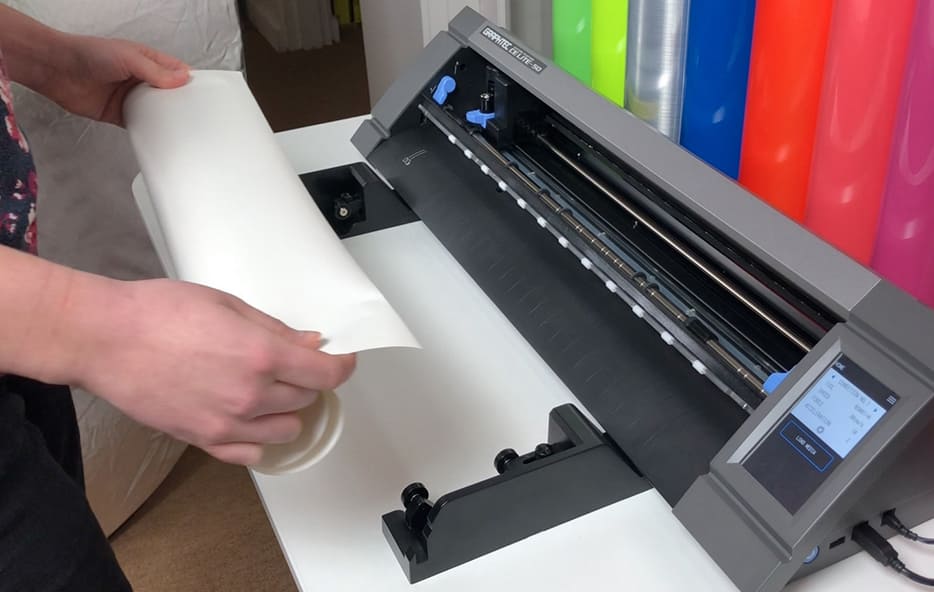Create a color image on the mirror
On some sites you can find such ignorant lines: "color glass frosting." Remember and distinguish between the concepts of color and transparency. Glass can be colored and colorless. Both glass can be frosted, that is, made opaque, matted. In this case, colorless glass will remain colorless, but frosted and colored glass will remain colored glass, only matted.
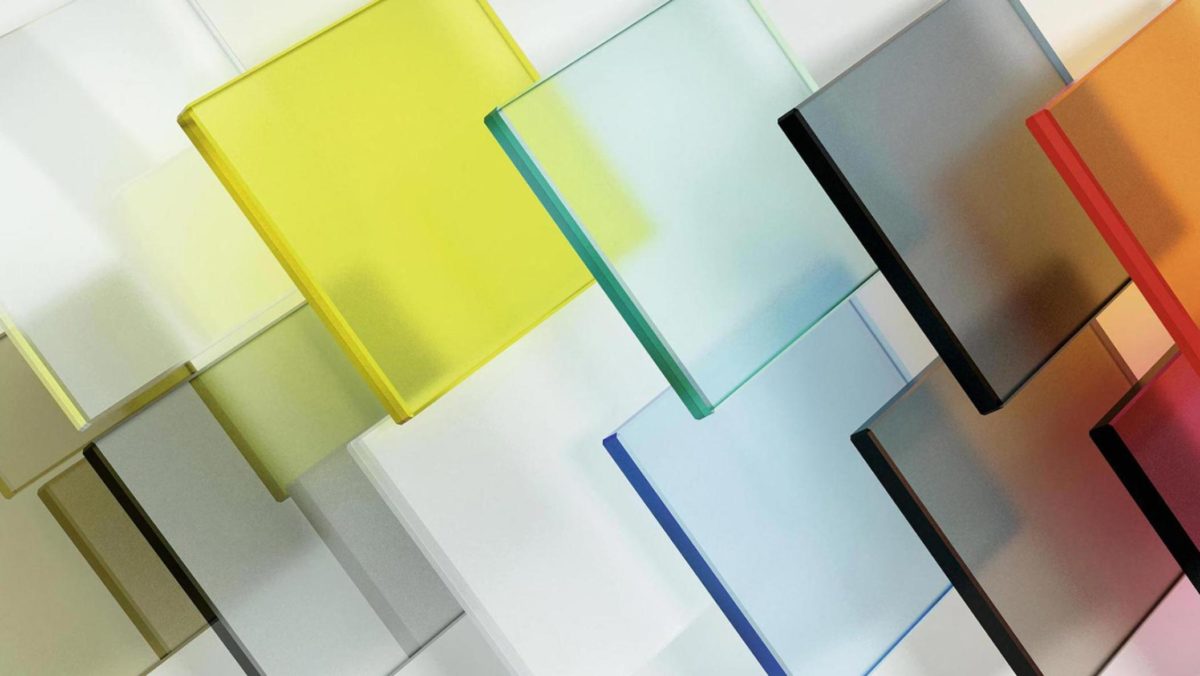
There is no color matted (frosted) glass that exists. This is the same as the saying, "color roughness." What many call color etching (frosting) of glass is actually nothing but staining on a frosted/matted surface.

It often happens that the usual matte image on the glass is not enough, you need to put a color image or inscription on the glass or mirror. Paints on smooth glass do not last long, and some do not cover the glass at all. In this case, the chemical frosting of glass helps. The essence of the method is that before painting the glass the surface is pre-treated with a matting paste or IVSATIN liquid, after which the frosted glass is painted. It is best for this purpose to use spray paints in spray cans, which are commercially available in different color variations.
First degrease the glass or mirror and remove unnecessary elements from the stencil.



Cut the desired size with a glass cutter, grind the edge and transfer the stencil to the mirror.



After sticking the stencil, we carefully press all the edges of the film and heat it with a hairdryer for better adhesion. Then we matte with paste and rinse..


So, after the standard procedure of frosting the glass and thoroughly rinsing and drying it, do not remove the stencil film from the product. Let the glass dry and proceed to colorize your pattern. If you want to make a multi-color drawing; prepare several spray cans of paint in different colors and masking tape. These will seal open areas of glass that are not intended for painting at a certain stage of decoration.

For example, you are going to paint the details of the picture, which are to be black. Therefore, all other parts of the open glass must be sealed with masking tape. When the preparations are finished, shake the can of black paint well and spray on glass. Do not bring the container close to the glass, otherwise you will get puddles. Also, do not cover the glass with too thick of a layer in paint. It will not lead to anything good.

After all the details in the drawing of the same color are painted, the glass should be set aside for drying and do not touch. Only after the first color has completely dried can you start painting other areas. The sequence is exactly the same.




Only after complete drying, remove the stencil. Try not to apply a lot of paint on the stencil film, otherwise, you will form a common film of paint on the glass and on the stencil. And when removing the stencil, you can damage the pattern.

Your product is ready! The drawing applied this way is quite resistant and durable.











